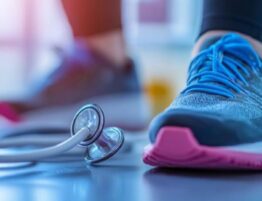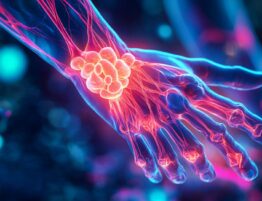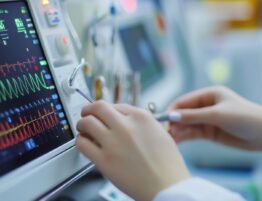A second stroke can be more disabling than the first, but prevention is possible with the right plan. Every small step matters — what you eat, how active you stay, and how closely you follow medical advice. Lifestyle changes include eating heart-healthy foods, staying active, and quitting smoking. They help protect blood vessels and improve circulation. Medications also play a key role in preventing clots, lowering blood pressure, controlling cholesterol, and managing diabetes. Skipping doses or ignoring symptoms can undo your recovery progress.
Regular follow-up for secondary stroke prevention ensures your neurologist monitors your brain health, checks for risk factors, and adjusts treatments as needed. These visits help maintain steady recovery and prevent future complications. By combining healthy daily habits, prescribed medications, and consistent medical supervision, you can significantly reduce your risk of complications. Prevention isn’t about perfection — it’s about progress. Each day of care, movement, and monitoring strengthens your defense against another stroke and supports lifelong brain and heart health.
How Antiplatelet Therapy Becomes Your 24/7 Bodyguard
One tiny pill of antiplatelet therapy stands between you and a second stroke. Platelets tend to clump on cracked arteries, but antiplatelet therapy puts a “Do Not Stick” label on them, reducing recurrence by 20–25% over a lifetime.
Here are the crucial points:
- Clot Prevention: Antiplatelet drugs prevent platelets from clumping together, which reduces the risk of clot formation — the leading cause of recurrent strokes and heart attacks.
- Continuous Protection: The medication provides 24/7 protection, maintaining smooth circulation and keeping vessels open even during rest. It prevents small clots from turning into major blockages that could trigger another event.
- Improved Blood Flow: Antiplatelets reduce platelet adhesion and aggregation, allowing blood to flow freely through the delicate arteries of the brain and heart. This protects oxygen delivery and cognitive function.
- Combination Therapy: In some cases, doctors prescribe dual antiplatelet therapy for short periods to boost early protection after a stroke, then transition to a single agent for long-term use.
Antiplatelet therapy acts as your 24/7 bodyguard through reliable use and proper follow-up. This approach defends against hidden threats, preserves blood flow, and secures your brain and heart health every single day.
Blood Pressure: The Silent Switch That Turns Strokes Off
Turning blood pressure control “on” dramatically reduces the risk of a second stroke. Every 10 mmHg drop in systolic pressure reduces recurrence by 35–40% — it’s the single biggest lever you can pull after discharge. Blood pressure control begins on day 2: use a home cuff twice daily, synced to an app. The 2025 AHA/ASA target is <130/80 mmHg for every survivor. Hit it, and hemorrhagic strokes plummet by 63%.
Let’s discuss the pivotal aspects:
- Cuff: Use an Omron upper-arm model from the validated list on validatebp.org for accuracy.
- Times: Measure blood pressure at wake-up and bedtime, always on the same arm. Sit calmly for five minutes in a quiet space.
- Goal: Keep readings between 115–129 / 70–79 mmHg, logged and tracked.
- Diet: Limit salt to under 2 grams daily and aim for 4,700 mg of potassium from foods like bananas and spinach.
- Move: A 30-minute brisk walk can lower pressure by 5/3 mmHg.
- Alert: Readings above 140/90? Send a message to your doctor for same-day medication or lifestyle adjustment.
One veteran’s story demonstrates the benefits of consistent blood pressure control. His readings dropped from 208/110 at discharge to 124/76 within just 30 days. By year three, he had experienced zero strokes. That change didn’t happen by luck — it came from discipline, tracking, and teamwork with healthcare professionals. Experts note that proper overnight blood pressure dips can prevent “wake-up clots,” the silent threat behind early-morning strokes.
Lifestyle Changes: Diet, Exercise, Smoking — Your Daily Stroke Shield
Your stroke lifestyle changes are free, doctor-prescribed, and stronger than any pill. Start on day 3 post-discharge and see a 40–60% decrease in recurrence odds. One healthy plate, one walk, one “no” to tobacco rebuilds your arteries while you sleep.
Here are the crucial steps:
- Diet: Follow the Mediterranean 2.0 plan — eat at least five servings of vegetables and two servings of fruit daily. Include salmon or other oily fish at least twice a week for omega-3 fatty acids. Use olive oil for cooking and as a dressing.
- Exercise: Engage in 150 minutes of moderate-intensity physical activity per week or 75 minutes of vigorous-intensity activity per week. Start with 5-minute walks and gradually increase by 2 minutes daily. Include chair yoga if mobility is limited. Reaching 10,000 steps a day cuts stroke risk by 25%.
- Smoking: Quit today. Combine a nicotine patch, varenicline, and the free text program (1-800-QUIT-NOW) for a 40% increase in success within the first year. Even one puff can reactivate clots for up to four hours.
Making lifestyle changes after a stroke empowers survivors to become fighters. These changes create a powerful daily defense system for your entire body. Nutritious foods nourish brain cells, stabilize blood pressure, and protect vessel walls. Regular physical activity enhances circulation, strengthens the heart, and improves overall mood and energy levels. Quitting smoking eliminates toxins that damage arteries and increase the risk of clot formation. Together, these habits help restore balance to your cardiovascular system and reduce inflammation, allowing the brain to maintain a steady flow of oxygen and nutrients. Over time, this disciplined approach supports long-term recovery, leads to sharper thinking, and dramatically lowers the risk of another stroke or heart event.
Neurologist Follow-Up: Your Brain’s Quarterly Oil Change
Think of your brain as a high-performance engine — it needs regular tuning to stay in top shape. That’s precisely what consistent stroke follow-up care provides. These visits aren’t just check-ins — they’re critical maintenance moments that keep your recovery on track and prevent future complications. During each appointment, your neurologist reviews your overall progress and treatment, checks the effectiveness of your medication, and evaluates any new or recurring symptoms that may have developed. Small changes in speech, coordination, or memory are carefully evaluated, allowing for adjustments to the treatment plan before problems escalate.
Beyond clinical care, stroke follow-up care offers reassurance and motivation. It helps you understand what’s working, what needs refining, and how to strengthen your long-term brain health. Neurologists often provide tailored advice on nutrition, physical activity, and emotional balance — key elements that support ongoing recovery. Doctors also monitor secondary risk factors, such as blood pressure, cholesterol, and blood sugar, to minimize the risk of another stroke.
Patient Education: Turning “I Should” into “I Did”
Long-term recovery after a stroke requires more than short-term effort — it’s about transforming good intentions into consistent action. Patient education helps bridge the gap between knowing and doing. By building understanding, routine, and accountability, individuals can take charge of their progress and maintain motivation over time.
Secondary stroke prevention is the foundation of this process. Patients who learn the “why” behind every step are more likely to stick with healthy habits. Education transforms fear into empowerment and confusion into clarity, turning passive compliance into active self-management.
Here are patient education strategies for long-term recovery and motivation:
- Set achievable goals: Start with small, realistic steps to avoid feeling overwhelmed. Celebrate every improvement, no matter how minor — it helps build confidence and momentum. Consistent success strengthens motivation and commitment.
- Track progress: Use journals, phone apps, or charts to record milestones and setbacks. Visual tracking helps patients recognize their progress and stay engaged in their recovery.
- Promote self-efficacy: Reinforce the belief that consistent effort yields lasting results and fosters independence.
Lifestyle changes for stroke recovery transform recovery from an obligation into a personal mission. When people understand science, feel supported, and see results, motivation grows naturally. Turning “I should” into “I did” becomes a daily mindset — one that protects the heart, strengthens the body, and builds confidence for life after stroke.
Your 60-Second Stroke-Proof Checklist
Stroke prevention is a lifelong commitment involving a combination of medical management and healthy living. Once a stroke occurs, the risk of recurrence rises, making proactive steps vital. By regularly monitoring your health and maintaining a balanced lifestyle while adhering to your care plan, you can significantly reduce the likelihood of future health issues.
How to stay protected every day:
- Antiplatelet therapy: Take your daily pill at the same time each day, paired with food. Set double alarms. Never skip — missing one dose triples the risk of clotting within 24 hours.
- Cholesterol management: Replace butter with olive oil and grill salmon at least twice a week. Fill half your plate with greens. Check your numbers every 3 months and aim for LDL <70.
- Alcohol moderation: Limit to one small glass for women and two for men — and only with meals. Drink water between drinks and mark sober days on the calendar.
Consistent routine stroke follow-up care forms the foundation for lasting brain and heart health. Maintaining blood pressure within a healthy range helps prevent further damage to blood vessels and reduces the risk of another stroke or heart attack. Regular monitoring helps detect changes early, allowing for timely adjustments in medication or lifestyle.











Please, leave your review
Write a comment: